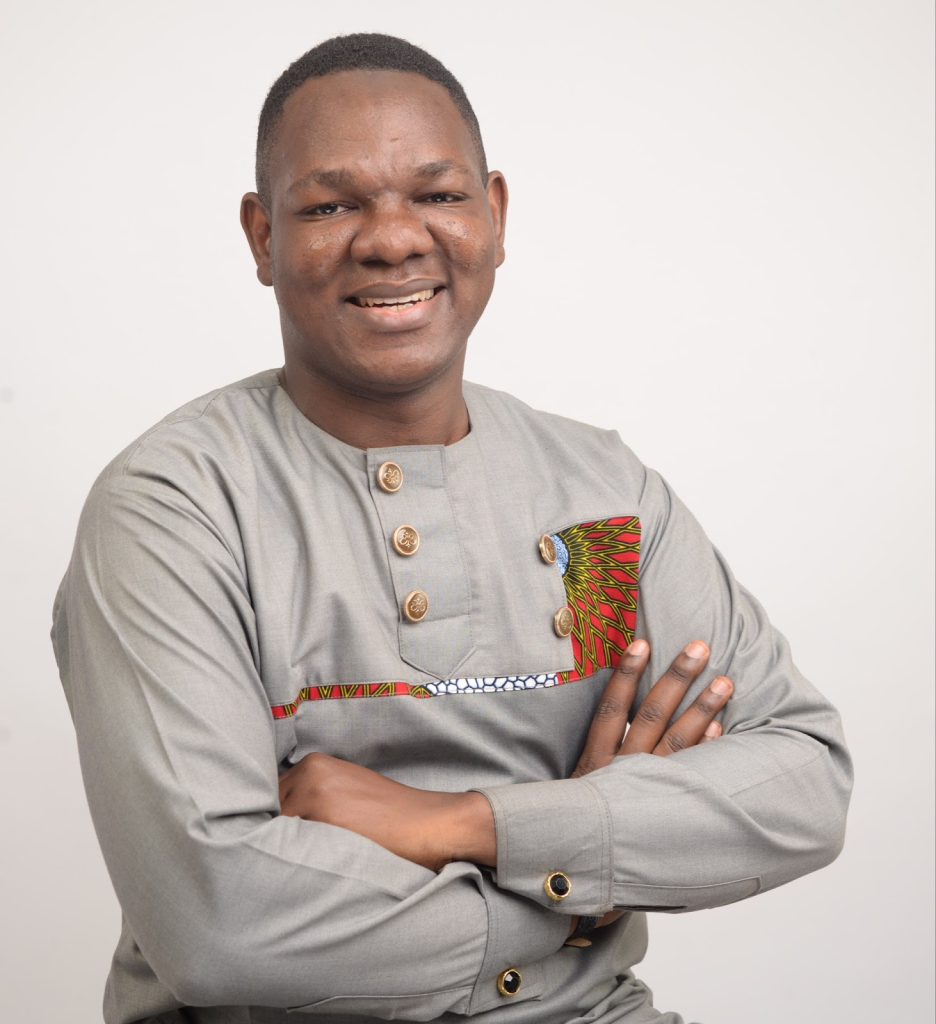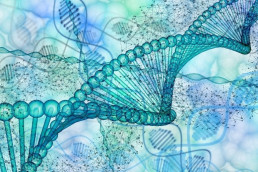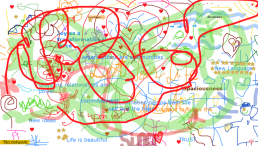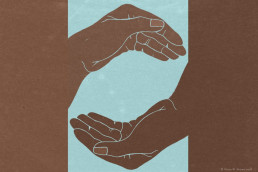The DNA of Organizational Transformation—Structure, Relationships & Shared Purpose
In my role as an organizational well-being officer at IBSS Corporation, I was given a unique opportunity. As part-scientist, part-community builder, and part-alchemist, I was able to bring my personal and felt understanding of well-being and investigate the work environment to see what was missing and create experiments to address the gaps. With great interest and enthusiasm, I explored all facets of employee well-being and built, reverse engineered and validated those conditions and components that were needed for well-being to thrive.
I was excited and curious to learn how an organization would look and function that put the well-being first of its employees, customers, suppliers, community, and even the earth.
- How would people feel going to work? How would that impact customer relationship and loyalty?
- What would that mean to suppliers who work with the organization and would they begin to absorb some of that well-being into how they operate?
- How would the organization be viewed by local and other communities? Would they consider the organization part of the community or just another name on a building they see as they walk by?
During my 3-year tenure, I investigated and experimented constantly. At the end of that window, I finally began to uncover the key fundamentals an organization needs to support the well-being of its employees. Then the pandemic hit. I don’t know if it was all the medical talk about vaccines and DNA or that I just had more alone time than usual to contemplate organizational well-being and transformation, but about six months later I had an aha moment! My insight involved genetics—specifically, the DNA of an organization.
“Double helix” is the biological term for the instantly recognizable structure of DNA. Often visualized as a twisted ladder or spiral staircase, the double helix consists of two strands of DNA wound around one another. Each of these strands holds different information that, when combined, form the language of the genetic code. I applied the double helix analogy to an organization’s structure, starting with the idea that these two DNA strands represent the building blocks for deep change and transformation.
- Structure: I call one strand the structure. This is the backbone of an organization, and it consists of all the operating procedures and workflows that are used to create internal change such as policies, processes, strategies, org charts, IT systems, etc. These are often used as levers to create change in an organization because they are typically measurable, tangible, and easy to see.
- Relationships The second strand, I call relationships This strand encompasses the individual work relationships employees have with the dozens of other employees they regularly interact with and the quality of those relationships.. Unlike structural elements, relationships aren’t something easily seen or measured, but it can be felt. It’s very similar to when a good facilitator can feel the group, or a performer can feel the crowd.
- The double helix’s twisted DNA strands are connected in the center by hydrogen bonding. This was the critical piece I soon realized was missing. The golden thread binding structure and relationships together is shared purpose. From an organizational standpoint, this third component may be the most important.
Aristotle famously said: “…the totality is not, as it were, a mere heap, but the whole is something besides the parts…” When the raw materials of structure, relationships, and shared purpose bond together they transmute into something very different, something far greater. This new harmonious state or way of functioning is experienced as emergence or flow. To achieve effective organizational change, all three of these fundamental building blocks must be present and working together.
I call this powerful trio of structure, relationships, and shared purpose the DNA of Transformation. It provides the unique genetic code that each group or organization needs to become a place of well-being, connection, care, compassion, empathy, and love while fulfilling its purpose. In my experience, this model can affect change on all levels—with people, teams, organizations, and systems. When organizations change at a DNA level the transformation becomes so deep that going back to the old ways of operating is just not possible. It’s like a butterfly trying to get back into its cocoon to become a caterpillar again—it just doesn’t happen! Does your organization know the right keys to nurture successful change and unlock well-being?

Derick Carter is a heart-centered facilitator, trainer, coach, and leadership consultant who guides organizations, communities, and emerging leaders to create social and organizational change, enhance well-being, and build togetherness. Having worked as a well-being officer for an award-winning government contractor, Derick is passionate about empowering organizational transformation, health, and wellness through his DNA Change Model, which binds structure and relationships with shared purpose. Derick also works at the forefront of heart-centered leadership development and is committed to collaboration and growing organic action from collective wisdom. With over 25 years of experience, Derick’s broad client base includes Fortune 500 companies to mid-size and small businesses, government agencies, non-profits, social enterprises and communities, and public works organizations. Additionally, Derick is a certified Feldenkrais Awareness Through Movement instructor, Functional Integration practitioner, and Heart-Centered Meditation guide.
www.buildwithderick.com / email: derick@buildwithderick.com
featured image found here

Network Weaver is dedicated to offering free content to all – in support of equity, justice and transformation for all.
We appreciate your support!
The Dots From Your Heart And Hand: Breathing Through Art
Like the fast-moving cars in cities, the fast-thinking minds of children throw smiles to my lips.
Building cars are complex – it takes a lot of creativity and expertise. On the flip side, kids crush complexities and build simple car toys that move – yet it takes their creative hands and expert minds to create.
So, what does it take to create the space for anyone anywhere to have the freedom to sparkle through their skills, gifts, stories and talents? Curiosity! The desire to see, think, hug, dance and work differently.
In the last 10 years, thinking about my network weaving journey – from dining with grassroots communities in African countries to virtually shaking hands with changemakers from 5 other continents of the world – one thing stands out: Humans are dynamic, gifts are uncountable, stories are limitless and creativity is endless.
I have seen the bright giggle, the reflective laughter, the inspiring aroma and spontaneous creations that people make in seconds, minutes and hours through their skills, stories and connecting with others.
Is that possible in an online space? You bet. Every word weaves into sentences, every silence makes sounds meaningful, every hello creates new possibilities.
Here’s an example. Sometime in April 2023 I facilitated a session about transformation with June Holley and Brendon Johnson, where we had over 30 people, mostly meeting each other for the first time, come together to use the zoom whiteboard to bring back their childhood painting power.
Everyone had just come back from a breakout room where they shared their personal or professional stories of transformation with 2 or 3 other people.
I gave an easy question: “what does transformation mean to you?” and turned on some gentle background music.
Participant could only reply by drawing, painting, colouring, building or breaking. Here’s the result, after 5 mins:

How did they do this in 5 minutes, turning an empty, plain canvas on Zoom to an amazing painting that reflects how we feel about transformation? I caught some words there: ‘Joy, spaciousness, courage, trust, new, aliveness’
It was a messy and intriguing experience that left everyone feeling inspired.
The whiteboard canvas became a piece of art – coming from the dots in people’s hearts, that ran to their hands and it popped as a beautiful design. Art accommodates all of us, despite being from different disciplines, communities, and networks.
This creation led us into many other conversations -- building relationships, exploring systems change, social innovation, complexity, indigenous practices, exchanging ideas, and learning from one another.
Read some of the reflection of participants:
Lucy Draper-Clarke: “It looks to me like the real, the humanizing qualities like joy, there was commitment, the heart and beauty, using those as the energy for transformation. So rather than focusing so much on what needs to be transformed where the problems are, it's like channeling the best of human qualities. into the process. So that's what came up for me through the stories and through all the hearts on the screen.”
Andy Stoll: “Well, it's messy. I think that's when you think about transformation. It's not a linear, easy one, two, three, four. Lots of different hands create a very emergent property of. No one had a plan for our picture, but here we are.
In communities, families, networks and life, there are several dots, in different forms, shapes, sizes, colors, contexts, carrying different potentials.
There are many tiny dots of sand supporting the ocean floor. The gentle kiss of the sand is part of the fun at the beach, in that same way, the small talk to build trust may lead to building a network edifice.
Everyone in a network has a need and we bring the gifts of our heart and hands to paint each other’s life with meaning.
For example, there are several dots of scrap metal that make a gigantic car. Beyond the money that engineers make, they put their hearts and hands to creating magic that helps us travel millions of miles.
Just as important, the dot of a smile can inspire a hopeless heart and that smile can cause a catalytic and daring embrace to a weak soul.
It was a dot – a curious step you took – to read this blog, but it may just lead to truckloads of ideas and opportunities.
There are multiple dots of virtues lined up limitlessly in your genes – what will you turn them into?

In the last 10 years, Damilola Fasoranti’s work has helped communities and networks turn their education, gifts, and skills into desired solutions. As a catalyst coach, network weaver, and social entrepreneur, he loves co-creating ‘chaos’ in learning, sharing, and communities to accelerate them towards creating positive impacts. In 2017, he created the first grassroots makerspace - a school without teachers - to trigger creativity and innovation in grassroots communities, as the Chief Listener at Prikkle Academy, Nigeria.

Network Weaver is dedicated to offering free content to all – in support of equity, justice and transformation for all.
We appreciate your support!
On Rest
I began this blog post thinking about operationalizing network values. It felt serious. I wanted to write a thing that helped me better understand that feeling in my body when it sensed that the work I was doing and the people I was doing it with, were justly constrained by tangible and consistent values which bore themselves out in our communication, care, and labor alongside each other. As Ramadan began to unfold and my days began to shape themselves around my fluctuating levels of energy, sleep, and reflection—I found that task to be daunting. Not because I couldn’t find examples of people in community and in networks trying to live out their values, but because it didn’t escape my attention that I needed rest and spaciousness more than I needed to write. So I rested, and with permission from a friend, tried again. Here’s what this season of rest, reflection, and failing often has been teaching me about living out our values as folks vested in justice and liberation work.
What is coming into bloom?
This year, Ramadan began a few days after the Spring equinox which is a tender blessing because it’s been a rough winter. If Winter is “the time of water,” marked by snow and a slow retreat inward, then Spring is the season of wildflowers, an offering of color meant to coax the spirit out of hiding. What I didn’t know is that I needed a quiet transition in between the two, a quiet clearing where I could emerge more authentically.
Fasting has demanded I remain honest about my true energy stores while making room to celebrate all the beautiful things happening around me. I do this holding fast to my rituals. Walks around my block or with a friend have helped me remain present with the world outside of my head and heart. Sharing meals and books and time with beloveds has also reminded me that while Ramadan can be an intensely personal experience, it is also one of community.
What emergent, surprising, and unique happenings in your community? How can you celebrate the small seeds of intention that are sprouting and germinating around you? What do you need today that you didn’t know you needed yesterday?
What demands quiet tending?
While fasting has helped me see more clearly where I need to be replenished, it has also helped me fail my way towards a more gentle reckoning. I say this as a person who is mostly bad at fasting and has needed permission to fail, and often. On days I break my fast hoping that it will fill a hunger in me I thought was caused by food alone, I eat and still hunger. It isn’t until I shower, take a nap, do some work, and cry at the tiniest nose nuzzle from a friend’s kitty that I realize I am not hungry, but sad and exhausted from carrying so much alone. Fasting this season is helping me gently reassess my consumptive habits—do I need to buy this latte or is my hunger bringing up shame? Do I need to do work right now or do I feel guilty for taking more time than I feel I am allowed? Am I tired from not eating or from the energy of holding back grief? If nothing else, Ramadan has created a clearing where I can ask more of myself more tenderly.
What demands quiet tending, for you, right now? I invite you to think about what this liminal space between true spring and our long winter is bringing up for you.
What do you need to give yourself permission to be bad at? How can you build in spaciousness for yourself? Who can you pull in to community?
Some gifts and offerings:
Santana, Primavera
Ada Limon, To Be Made Whole
Huda Hassan, I Tried to Fast it Away
Katherine May, How Winter Replenishes

Sadia Hassan is an award winning writer, equity consultant and network weaver who enjoys using a human-centered approach to crafting inclusive, equitable, and participatory processes for capacity building. Her skills include: leadership development training using Public Narrative, facilitation, coaching, cultural strategy, program management and workshop design.
She has received a Masters in Fine Arts, Poetry at the University of Mississippi and a Bachelor of Arts in African/African-American Studies from Dartmouth College. Her essays, fiction and poetry have been published widely in national journals such as Longreads, American Academy of Poets, and The Boston Review. You can find more of her work on her website at sadiahassan.com

Network Weaver is dedicated to offering free content to all – in support of equity, justice and transformation for all.
We appreciate your support!
Creative Freedom for True Equity
Equity is often discussed, but rarely understood in a context that speaks to the core challenges of people who are under-represented in race, religion, gender, socio economic status or who may be geographically excluded and differently abled. In particular, the necessary experiences and spaces for communities within rural Texas are just beginning to receive the attention and resources required to spark conversation and change. Paying homage to deep rooted history and lineage of community members is essential for Black communities in Bastrop County, Texas (and beyond). In Bastrop, home to 13 original Freedom Colonies, the untapped power of equity-for-all lies in the centering of Blackness. In order for our society to evolve, it is imperative to recognize Black America's contributions and sacrifices as a strategy towards equity for everyone. This has been the primary focus of my personal work, which aspires to bring about social change for all.
Grappling with the core roots of exclusion and inequity, Network Weaving helps to build a framework for connection, access, support and consistent learning– a critical necessity for many who have generational ties to this local land. In Central Texas, approaching community organizing from a network weaving paradigm has supported an evolving model of rural mental health equity in many ways by building on existing culture of community-led organizing. By providing resources for gatherings and trainings for local community leaders, network weaving has become a pillar of support for the work already being done by many on-the-ground community members of these rural networks.
As a weaver, the support of this network and the ability to work collectively and autonomously alongside like-minded people has helped me develop the courage to continue down the path of creating safe spaces for Black women and Black boys. While they continue to be challenged by those who rarely experience the feeling of being othered, safe spaces continue to be places where, as Kelsey Gladwell writes, “we can simply be — where we can get off the treadmill of making white people comfortable and finally realize just how tired we are. Valuing and protecting spaces for people of color (PoC) is not just a kind thing that white people can do to help us feel better; supporting these spaces is crucial to the resistance of oppression.”
After the George Floyd Protests, people began coming to us, as community leaders to shoulder the burden of anti racist organizing, but as a mental health clinician, I saw that my community required a more communal approach that centered their mental, spiritual, ancestral and physical health. This led me to co-create a series of social wellness brunches for Black women in central Texas, a podcast about centering community voices in healing, and the Bastrop County Black Boys Collective which aims to nurture their innovation through connection with other boys and men.
Resistance has been the bedrock to creating safe spaces for local black communities, and it has often been misunderstood as an exclusionary act. Finding the courage, self-love and dedication to create from a vulnerable place has been an emancipating experience, making it hard to return back to “business as usual.” My vision and purpose, as I reflect on my life thus far, are to find ways to enhance freedom and liberation for like-minded communities. To get to this creative utopia, I often reflect and ask myself;
- How can I continue to create spaces for renewal, healing, safety, trust and belonging?
- Who understands and can support this desire for creative freedom?
- What are my strategies to unearth the core stories around me that have led to freedom and prosperity for rural Black America?
- How can we as a collective redefine “success” to allow space for our inherent goodness?
- Where and how can I build upon my connections to others dedicated to liberation?
Through my partnership with the network weaving community since 2019, I’ve been able to form lasting relationships to other community organizers, writers, and social change agents who also see a path towards healing for the communities in which they identify. Weavers are a set of individuals looking to bring attention to the causes that they are most passionate about. Working with advocates and activists dedicated to equity initiatives has been confirmation that we have much more work to do but…I am not alone.
As a Black woman, Mother, mental health strategist, and safe space creator, I’ve been able to carve out a path of healing with my community. These experiences have enabled me to have a clear awareness of those around me and the resources needed to build upon a framework of freedom, liberation, reciprocity and resilience while redefining my understanding of self within the totality of my community.
The thought-leaders within the network have remained bold, focused on serving all populations and dedicated to creating a system of social entrepreneurs with the belief that social entrepreneurship which honors the lived-experiences of community leaders and disruptors is the catalyst towards rural social and political change.
We are innovators and creators. My legacy will be the creation of a physical space for healing, freedom, and creativity for the under-represented. As an act of rebellion and love, weaving through my social change work has helped to heal my battle with power by stepping into my potential as a Network Engine, connector and artist. Weaving has become an important aspect of reclaiming my right to connect and create with like-minded individuals. I’ve already begun to witness the shift in our local narrative, relying on the voices, contributions and vast experiences of the black community.
The function, the profoundly serious function, of racism is distraction. It keeps you from doing your work. It keeps you explaining, repeatedly, your reason for being. - Toni Morrison
Krystal Grimes, M.S., LPC is the President and Founder of AMMA Empowerment Services, LLC. Krystal is recognized regionally and internationally as a safe space creator and mental health strategist. Through an intrinsic ability and desire to support others, Krystal has positioned herself as a local convener and facilitator for healing and diversity initiatives, supporting the creation of inclusive and brave spaces for dialogue and innovation.
featured image by Alicia W. Brown

Network Weaver is dedicated to offering free content to all – in support of equity, justice and transformation for all.
We appreciate your support!
donate in the box above or click here



